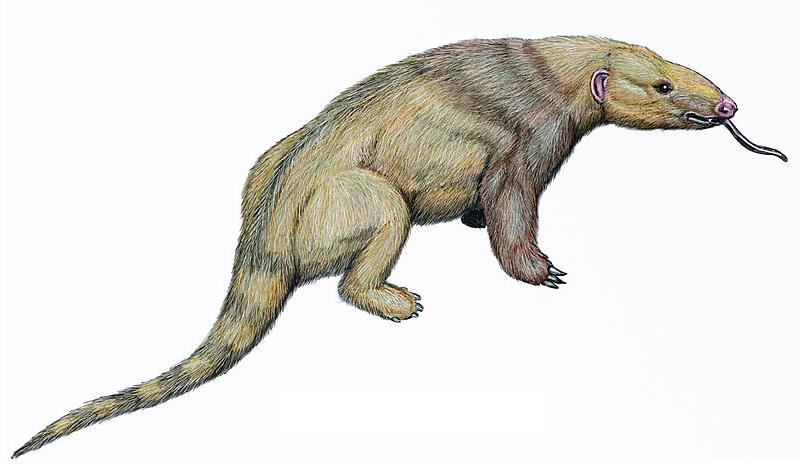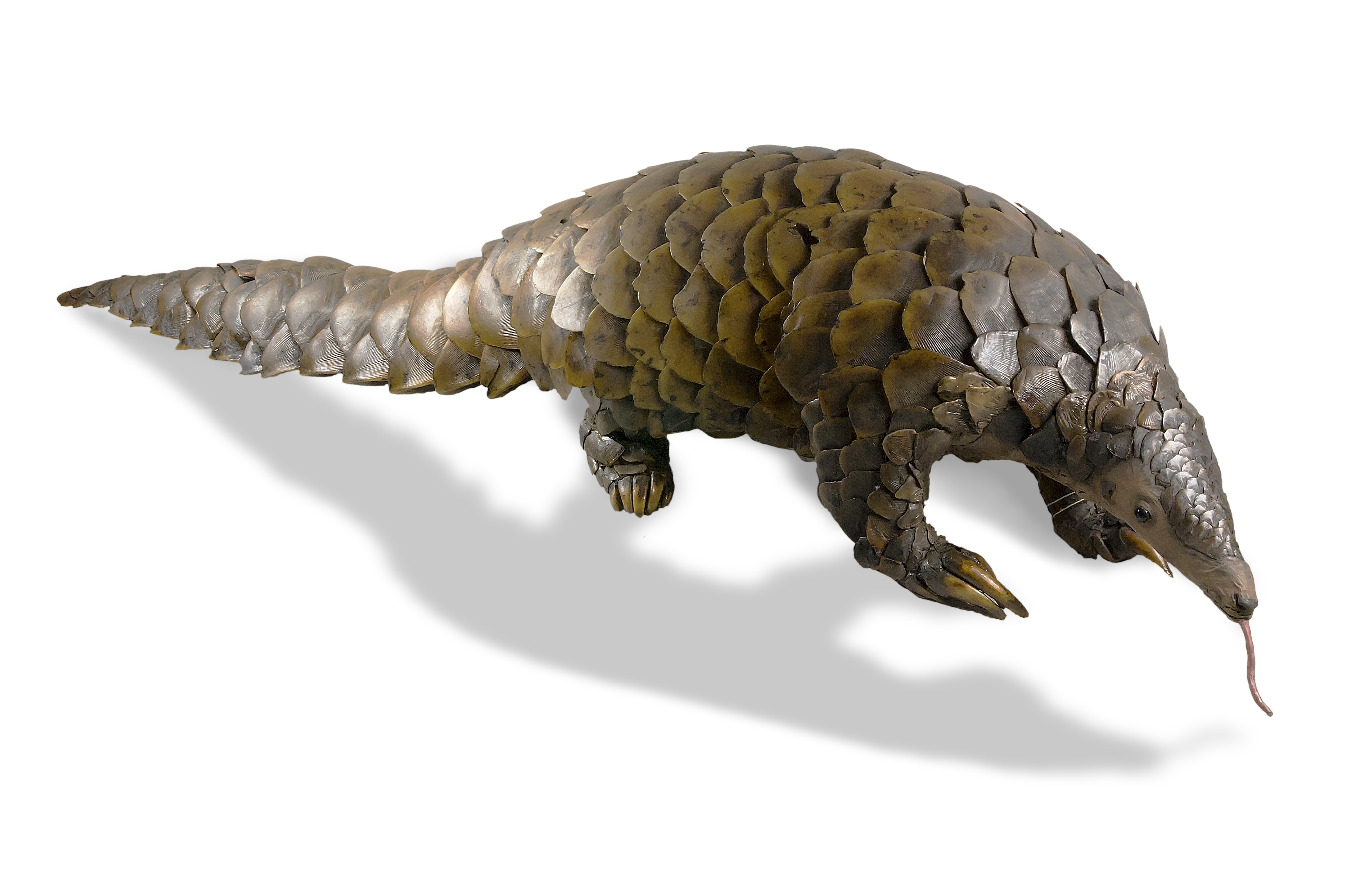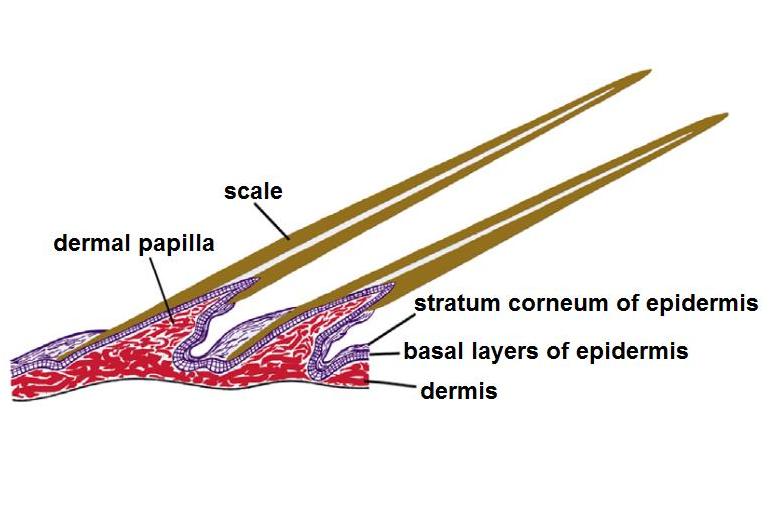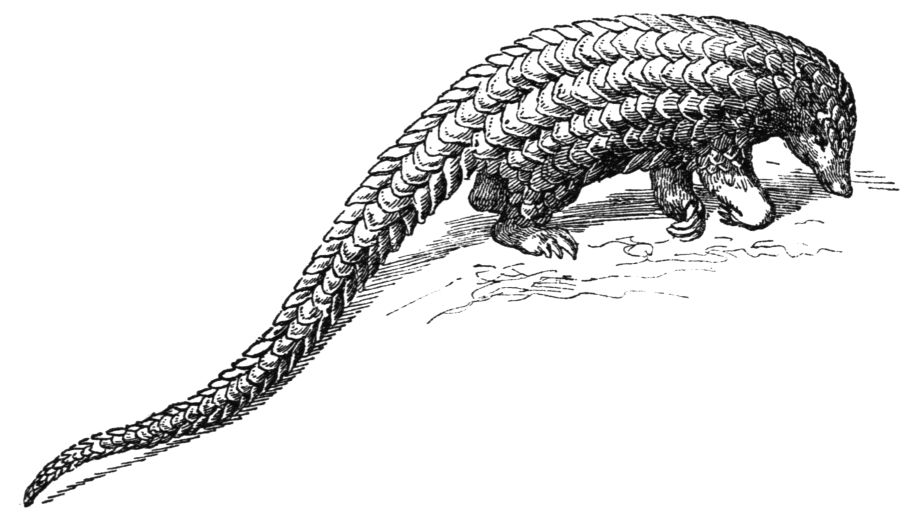|
Smutsia
African ground pangolin (''Smutsia'' - " Smuts's animal") is a genus of pangolins from subfamily Smutsiinae within family Manidae. It was formerly considered a subgenus of genus ''Manis''. Its members are the more terrestrial of the African pangolins. In past, this genus was also present in Europe. Description The Smutsia species can be easily distinguished due to a layer of protective horny scales covering their long streamlined bodies, small cone-shaped heads, and thick tails. Resembling artichoke leaves, the scales are composed of fused hairs. When threatened, members of the species roll into an impenetrable ball, leaving the sharp, yellow-brown scales exposed to the predator. Diet and nutrition Ground pangolins are carnivorous animals which mainly eat termites and ants, though larvae and other soft-bodied insects are also consumed on occasion. Mating life Ground pangolins reach sexual maturity at around 5–7 years of age. The species is described as polygynous: one mal ... [...More Info...] [...Related Items...] OR: [Wikipedia] [Google] [Baidu] |
Smutsia Olteniensis
''Smutsia olteniensis'' ("pangolin from Olt") is an extinct species of pangolins from genus ''Smutsia'' of subfamily Smutsiinae within family Manidae. Fossilized remains of the species were found in Romania, providing evidence regarding the existence of pangolins in Europe during the Plio-Pleistocene period. Description The appearance of ''Smutsia olteniensis'' is assumed to be closely similar to that of its two extant relatives, ''Smutsia gigantea'' and ''Smutsia temminckii'', the giant pangolin and ground pangolin, respectively. Analysis of a right humerus of ''Smutsia olteniensis'', as well as comparison with extant ''Smutsia'' pangolins and a Pliocene humerus belonging to ''Smutsia gigantea'', has led to the discovery of several major differences among the specimen humeri, warranting the creation of a new species. Based on this humerus, the estimated size of ''Smutsia olteniensis'' identifies it as smaller than extant adult giant pangolins (normally recorded weighing around ... [...More Info...] [...Related Items...] OR: [Wikipedia] [Google] [Baidu] |
Giant Pangolin
The giant pangolin (''Smutsia gigantea'') is a species of pangolin from genus '' Smutsia'' of subfamily Smutsiinae within the family Manidae. It is the largest living species of pangolins. Members of the species inhabit Africa with a range stretching along the equator from West Africa to Uganda. It subsists almost entirely on ants and termites. Description The giant pangolin is the largest of all pangolin species. While its average mass has not been measured, one specimen was found to weigh between and . Males are larger than females, with male body lengths about to and females about to . Like all pangolins, the species is armored with large, brown to reddish-brown scales formed from keratin. Curiously, it also has eyelashes. The giant pangolin has a long snout, a long, thick tail, and large front claws. The animal has a strong sense of smell and large anal glands. Its secretions may be significant to animal communication. The species walks with most of its weight on its ... [...More Info...] [...Related Items...] OR: [Wikipedia] [Google] [Baidu] |
Ground Pangolin
The ground pangolin (''Smutsia temminckii''), also known as Temminck's pangolin, Cape pangolin or steppe pangolin is a species of pangolin from genus ''Smutsia'' of subfamily Smutsia, Smutsiinae the within family Manidae. It is one of four species of pangolins which can be found in Africa, and the only one in southern and eastern Africa. The animal was named for the Dutch zoologist Coenraad Jacob Temminck. Physical description Pangolins are almost completely covered in overlapping, protective scales, which makes up about 20% of their body weight.African Wildlife Foundatio"Pangolin"/ref> The scales are composed of keratin, the same material that forms human hair and fingernails, and give pangolins an appearance similar to a pinecone or artichoke.John D. Sutter"The Most Trafficked Animal You Have Never Heard Of"CNN The underside of a pangolin is not covered with scales, but sparse fur, instead. When threatened, it usually rolls up into a ball, thus protecting its vulnerable bell ... [...More Info...] [...Related Items...] OR: [Wikipedia] [Google] [Baidu] |
Manidae
Manidae (" spirits") is the only extant family of pangolins. This family comprises three genera ('' Manis'' from subfamily Maninae, '' Phataginus'' from subfamily Phatagininae, and '' Smutsia'' from subfamily Smutsiinae), as well as the extinct Fayum pangolin. Classification and phylogeny History of classification All species of living pangolin had been assigned to the genus ''Manis'' until the late 2000s, when research prompted the splitting of extant pangolins into three genera: '' Manis'', '' Phataginus'', and '' Smutsia''. Taxonomy * Family: Manidae (pangolins) ** Subfamily: Maninae (Gray, 1821) (Asian pangolins) *** Genus: '' Manis'' (Linnaeus, 1758) (Asian pangolin) **** (unranked): northern Asian clade ***** '' Manis pentadactyla'' (Linnaeus, 1758) (Chinese pangolin) ***** †'' Manis hungarica'' (Kormos, 1934) **** (unranked): southern Asian clade ***** '' Manis crassicaudata'' (Gray, 1827) (Indian pangolin) ***** ''Manis'' sp. (''Scale_H4'' & ''Scale_H8'')Jingyan ... [...More Info...] [...Related Items...] OR: [Wikipedia] [Google] [Baidu] |
Pangolin Hardwicke (white Background)
Pangolins, sometimes known as scaly anteaters, are mammals of the order Pholidota (). The one extant family, the Manidae, has three genera: ''Manis'', ''Phataginus'', and ''Smutsia''. ''Manis'' comprises four species found in Asia, while ''Phataginus'' and ''Smutsia'' include two species each, all found in sub-Saharan Africa. These species range in size from . Several extinct pangolin species are also known. In September 2023, nine species were reported. Pangolins have large, protective keratin scales, similar in material to fingernails and toenails, covering their skin; they are the only known mammals with this feature. Depending on the species, they live in hollow trees or burrows. Pangolins are nocturnal, and their diet consists of mainly ants and termites, which they capture using their long tongues. They tend to be solitary animals, meeting only to mate and produce a litter of one to three offspring, which they raise for about two years. Pangolins superficially resemble ar ... [...More Info...] [...Related Items...] OR: [Wikipedia] [Google] [Baidu] |
Pangolin
Pangolins, sometimes known as scaly anteaters, are mammals of the order Pholidota (). The one extant family, the Manidae, has three genera: '' Manis'', '' Phataginus'', and '' Smutsia''. ''Manis'' comprises four species found in Asia, while ''Phataginus'' and ''Smutsia'' include two species each, all found in sub-Saharan Africa. These species range in size from . Several extinct pangolin species are also known. In September 2023, nine species were reported. Pangolins have large, protective keratin scales, similar in material to fingernails and toenails, covering their skin; they are the only known mammals with this feature. Depending on the species, they live in hollow trees or burrows. Pangolins are nocturnal, and their diet consists of mainly ants and termites, which they capture using their long tongues. They tend to be solitary animals, meeting only to mate and produce a litter of one to three offspring, which they raise for about two years. Pangolins superficially resemb ... [...More Info...] [...Related Items...] OR: [Wikipedia] [Google] [Baidu] |
Pholidota Sp
Pangolins, sometimes known as scaly anteaters, are mammals of the order Pholidota (). The one extant family, the Manidae, has three genera: ''Manis'', ''Phataginus'', and ''Smutsia''. ''Manis'' comprises four species found in Asia, while ''Phataginus'' and ''Smutsia'' include two species each, all found in sub-Saharan Africa. These species range in size from . Several extinct pangolin species are also known. In September 2023, nine species were reported. Pangolins have large, protective keratin scales, similar in material to fingernails and toenails, covering their skin; they are the only known mammals with this feature. Depending on the species, they live in hollow trees or burrows. Pangolins are nocturnal, and their diet consists of mainly ants and termites, which they capture using their long tongues. They tend to be solitary animals, meeting only to mate and produce a litter of one to three offspring, which they raise for about two years. Pangolins superficially resemble ar ... [...More Info...] [...Related Items...] OR: [Wikipedia] [Google] [Baidu] |
Pangolin
Pangolins, sometimes known as scaly anteaters, are mammals of the order Pholidota (). The one extant family, the Manidae, has three genera: '' Manis'', '' Phataginus'', and '' Smutsia''. ''Manis'' comprises four species found in Asia, while ''Phataginus'' and ''Smutsia'' include two species each, all found in sub-Saharan Africa. These species range in size from . Several extinct pangolin species are also known. In September 2023, nine species were reported. Pangolins have large, protective keratin scales, similar in material to fingernails and toenails, covering their skin; they are the only known mammals with this feature. Depending on the species, they live in hollow trees or burrows. Pangolins are nocturnal, and their diet consists of mainly ants and termites, which they capture using their long tongues. They tend to be solitary animals, meeting only to mate and produce a litter of one to three offspring, which they raise for about two years. Pangolins superficially resemb ... [...More Info...] [...Related Items...] OR: [Wikipedia] [Google] [Baidu] |
Phataginus
African tree pangolin (''Phataginus'') is a genus of African pangolins from subfamily small African pangolins (Phatagininae), within family Manidae. Its members are the more arboreal of the African pangolins. From 2010 to 2019, at least 895,000 pangolins from the genus ''Phataginus'' were illegally trafficked. The animal is hunted and poached for its scales and meat, and is often used in making traditional medicine in places such as China and Vietnam. Attempts to protect these mammals from trafficking and extinction are ongoing; unfortunately their slow reproduction rate stymies population recovery. Currently the tree pangolin is listed as vulnerable. All pangolin species have been listed as vulnerable, endangered, or critically endangered. Etymology Constantine Rafinesque (1821) formed the Neo-Latin generic name ''Phataginus'' from the French term ''phatagin'', adopted by Count Buffon (1763) after the reported local name ''phatagin'' or ''phatagen'' used in the East Indies. ... [...More Info...] [...Related Items...] OR: [Wikipedia] [Google] [Baidu] |
Manis
''Manis'' (" spirit") is a genus of South Asian and East Asian pangolins, the Asiatic pangolins, from subfamily Maninae, within family Manidae. Taxonomy * Subfamily: Maninae (Asiatic pangolins) ** Genus: ''Manis'' (Asiatic pangolins) *** '' Manis crassicaudata'' (Indian pangolin) *** '' Manis pentadactyla'' (Chinese pangolin) *** ''Manis aurita ''Manis aurita'', the Indo-Burmese pangolin, is a pangolin Pangolins, sometimes known as scaly anteaters, are mammals of the order Pholidota (). The one extant family, the Manidae, has three genera: '' Manis'', '' Phataginus'', and '' Smut ...'' (= ''Manis indoburmanica'')Wangmo, L. K., Ghosh, A., Dolker, S., Joshi, B. D., Sharma, L. K., & Thakur, M. (2025)Indo-Burmese pangolin (''Manis indoburmanica''): a novel phylogenetic species of pangolin evolved in Asia.Mammalian Biology, 1-8. *** '' Manis mysteria'' (Cryptic pangolin)https://www.sci.news/biology/manis-mysteria-12316.html *** †'' Manis hungarica'' *** †'' Manis lydekk ... [...More Info...] [...Related Items...] OR: [Wikipedia] [Google] [Baidu] |
Necromanis
''Necromanis'' ("extinct pangolin") is an extinct genus of pangolin from superfamily Manoidea. It lived from the middle Oligocene to middle Miocene in Europe. It was originally placed within family Manidae, but was eventually removed from it as more fossil pholidotids from outside that family were found and studied more extensively (i.e., with the discovery and study of ''Eomanis'' and ''Patriomanis'').Gaudin, Timothy J., Robert J. Emry, and Brandon Pogue. "A new genus and species of pangolin (Mammalia, Pholidota) from the late Eocene of Inner Mongolia, China." Journal of Vertebrate Paleontology 26.1 (2006): 146-159. Currently, ''Necromanis'' is placed as ''incertae sedis'' within the pholidotid superfamily Manoidea, together with the families Manidae and Patriomanidae. ''N. quercyi'' was originally placed within ''Teutomanis'' by Ameghino in 1905, but was later subsumed into ''Necromanis''. A new fossil humerus attributed to ''N. franconica'' from Quercy, France lead researchers ... [...More Info...] [...Related Items...] OR: [Wikipedia] [Google] [Baidu] |
Patriomanidae
Patriomanidae ("fathers of pangolins") is an extinct family of pangolins from superfamily Manoidea that includes two extinct genera '' Patriomanis'' and '' Cryptomanis''. Their fossils are found in Asia and North America. Taxonomy * Family: †Patriomanidae ** Genus: †'' Cryptomanis'' *** †''Cryptomanis gobiensis'' ** Genus: †'' Patriomanis'' *** †''Patriomanis americana'' Phylogeny Phylogenetic position of family Patriomanidae within superfamily Manoidea. See also * Mammal classification * Manoidea Manoidea ("Manes, spirits") is a superfamily of pangolins from suborder Eupholidota that includes extant family Manidae, extinct family Patriomanidae and extinct genus ''Necromanis''. Taxonomy * Superfamily: Manoidea (pangolins) ** Family: Ma ... References Prehistoric pangolins Prehistoric mammal families {{Paleo-mammal-stub ... [...More Info...] [...Related Items...] OR: [Wikipedia] [Google] [Baidu] |







